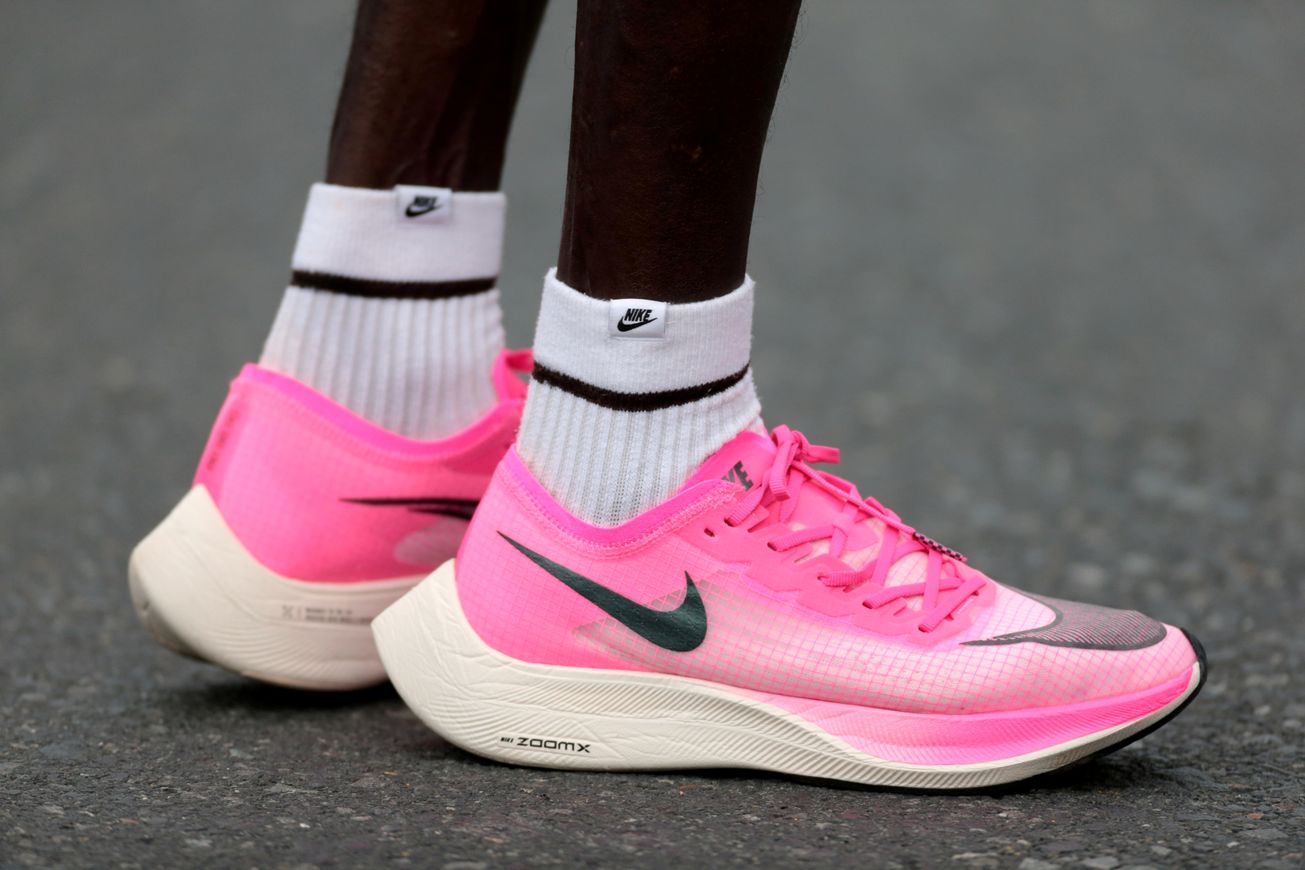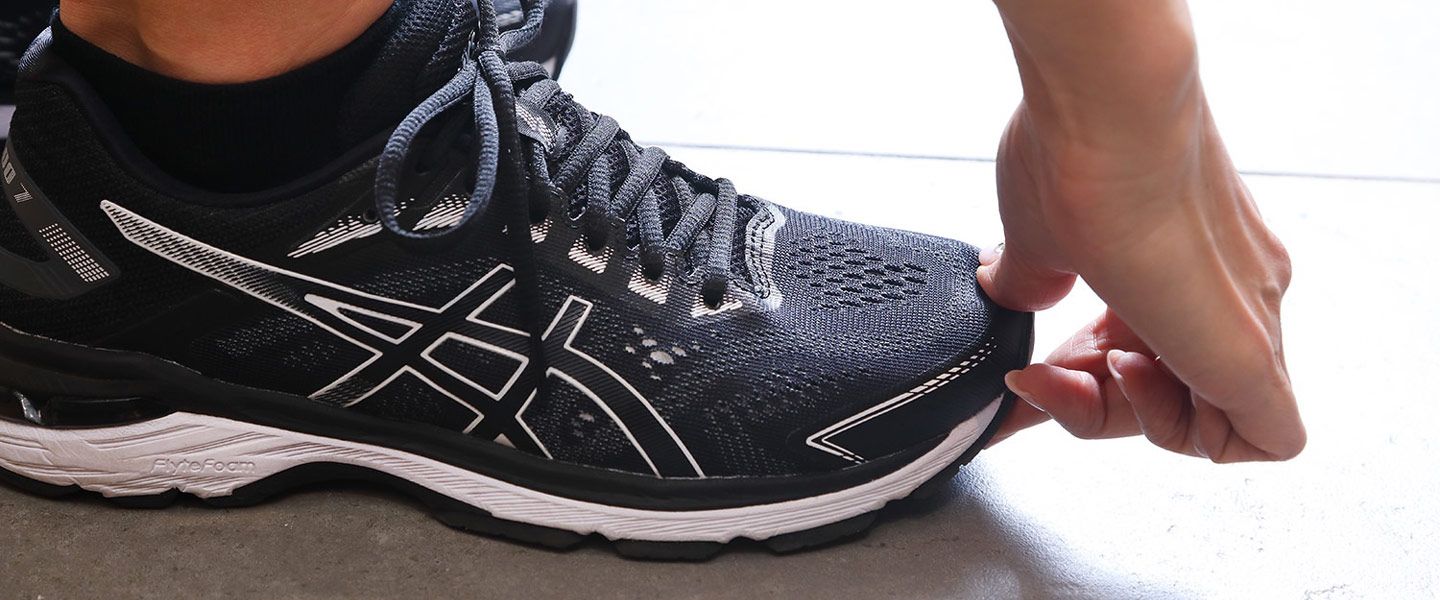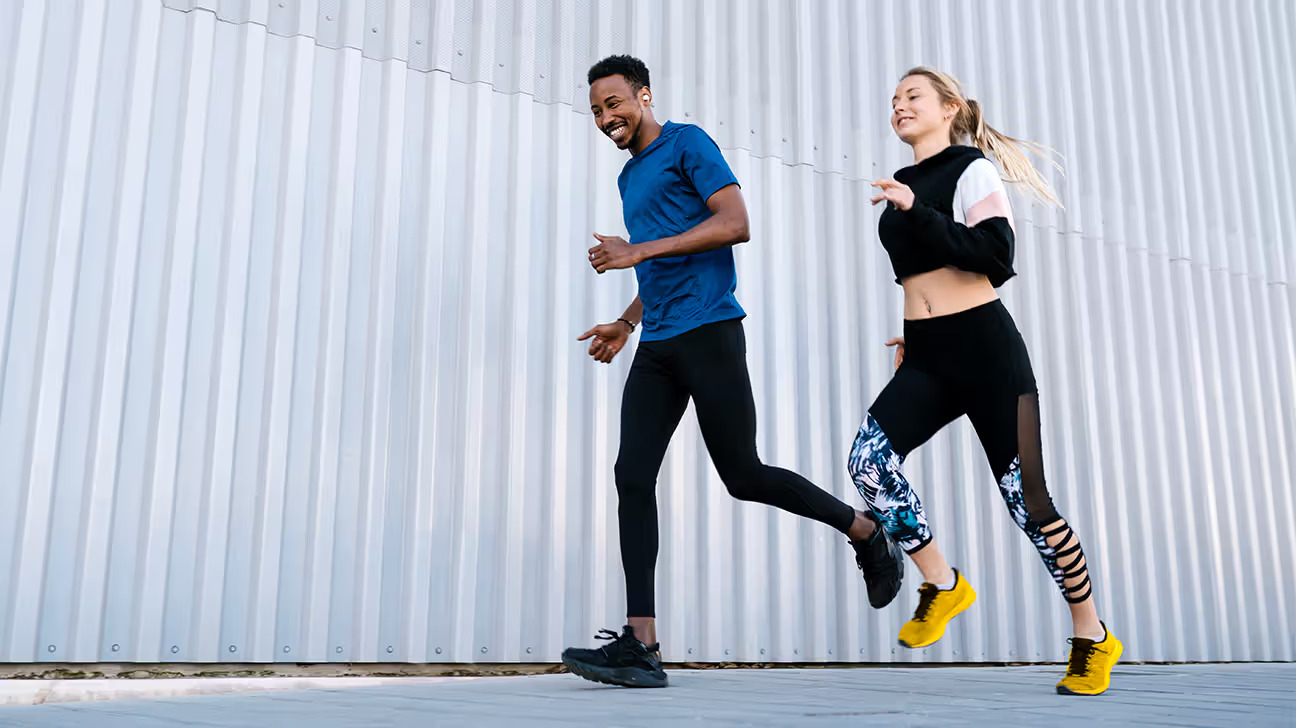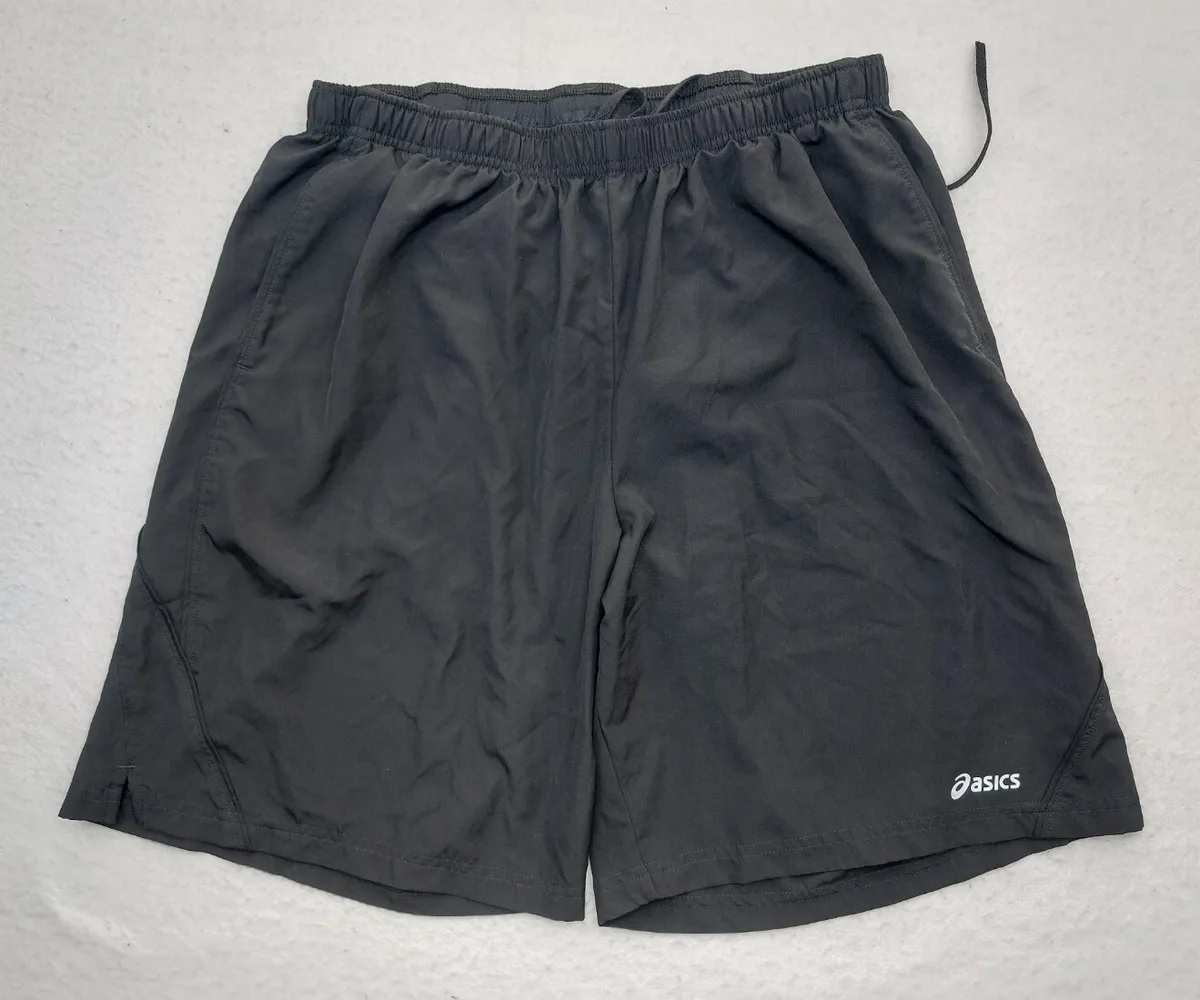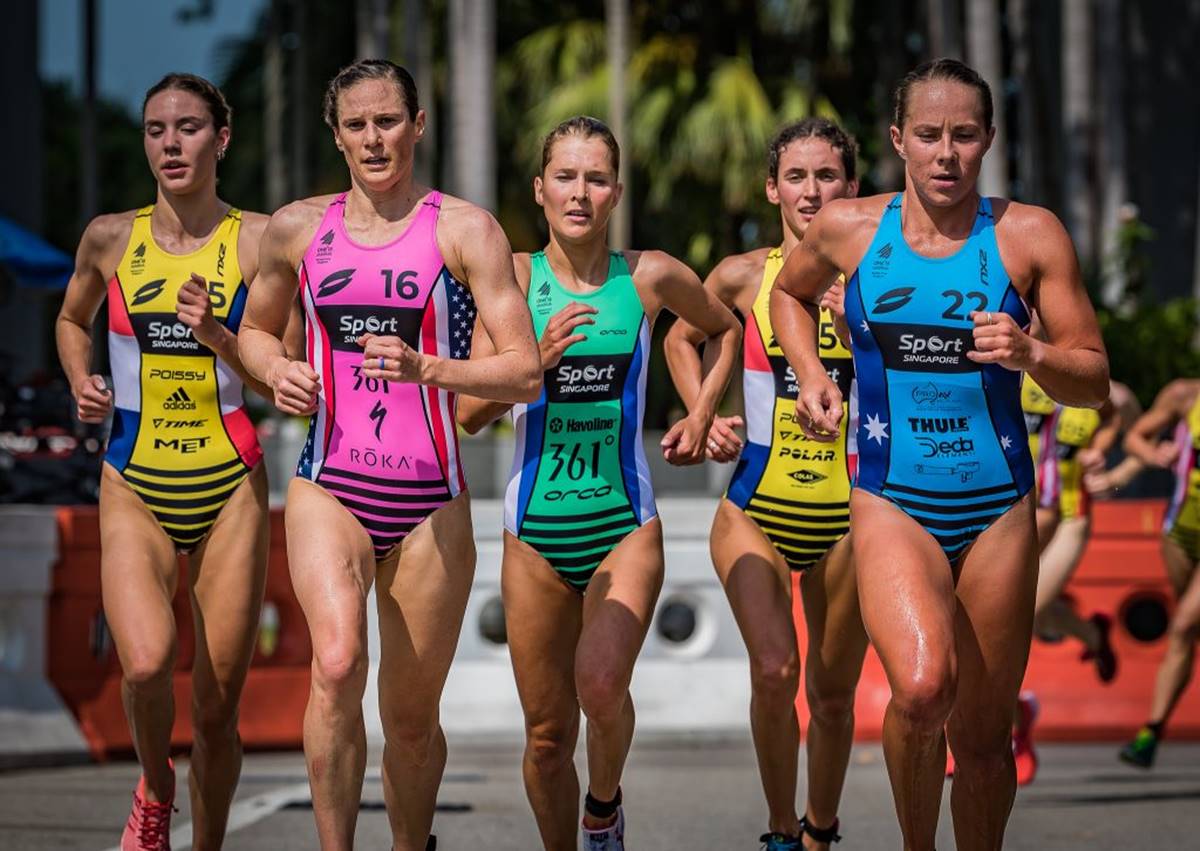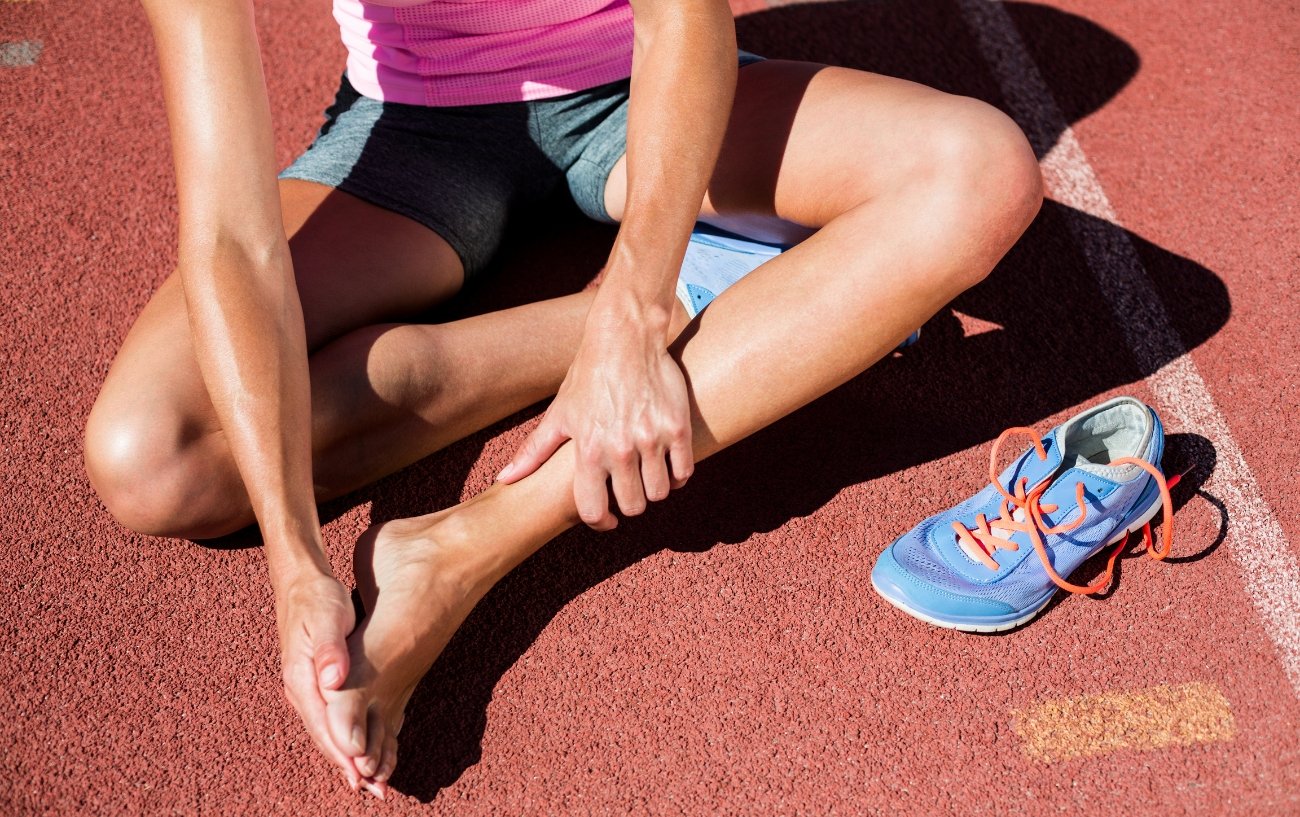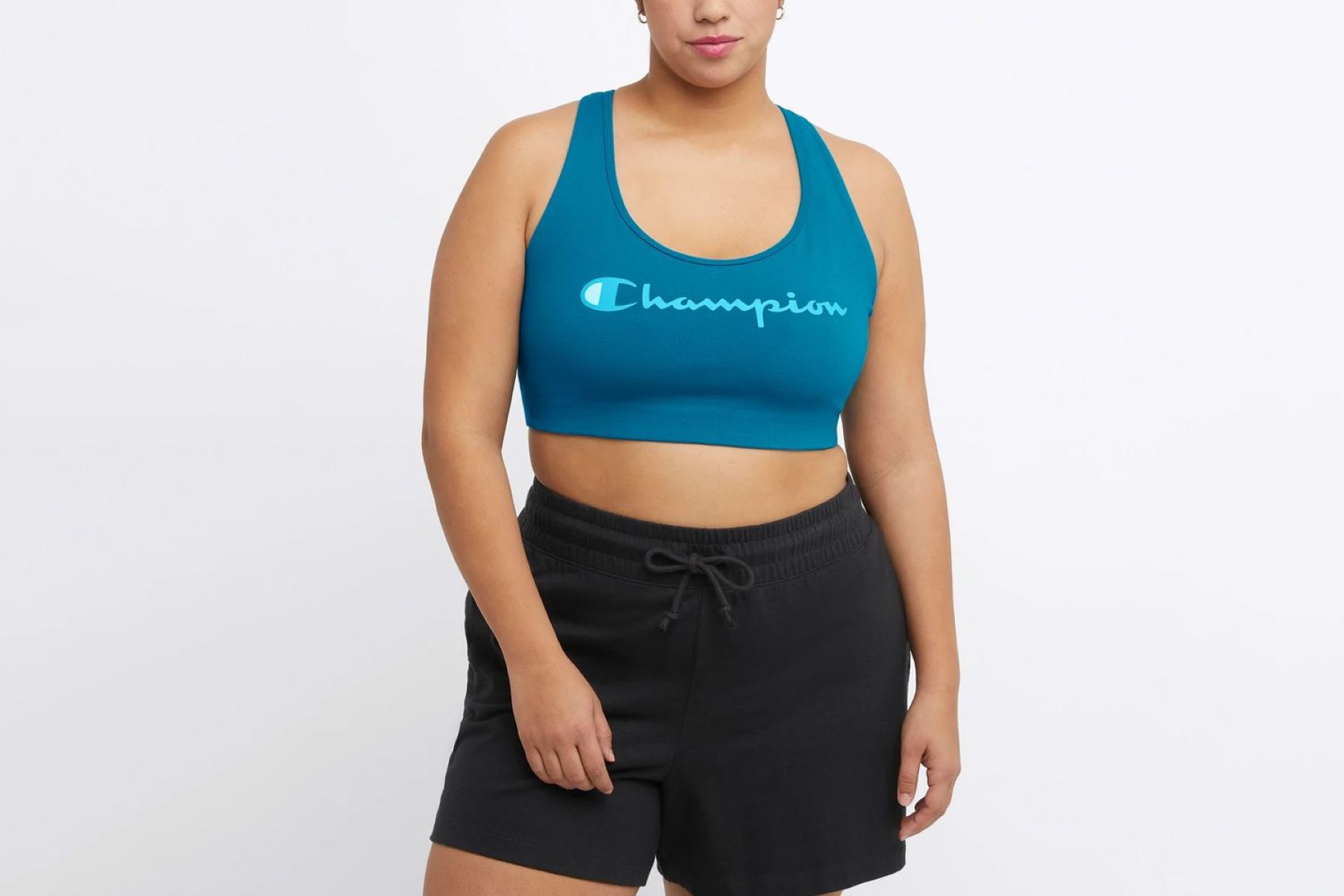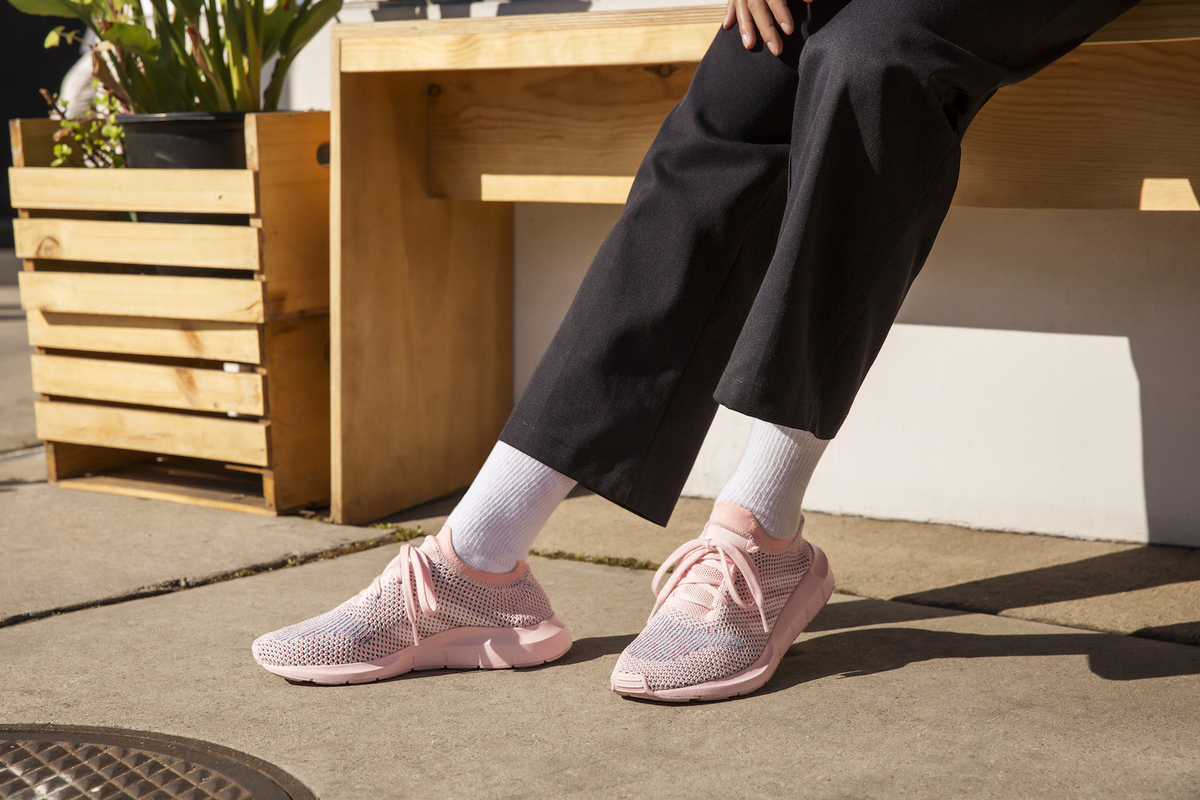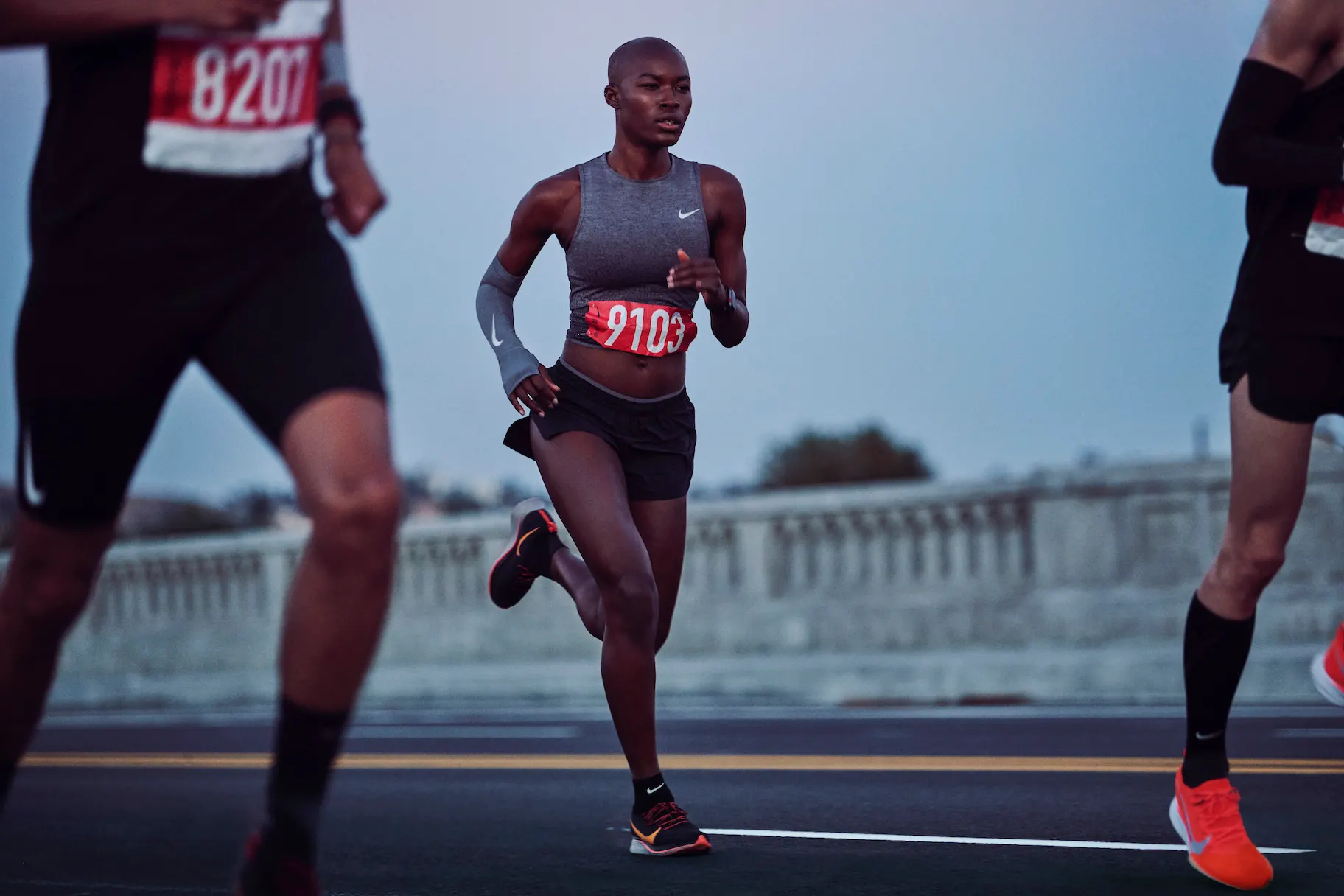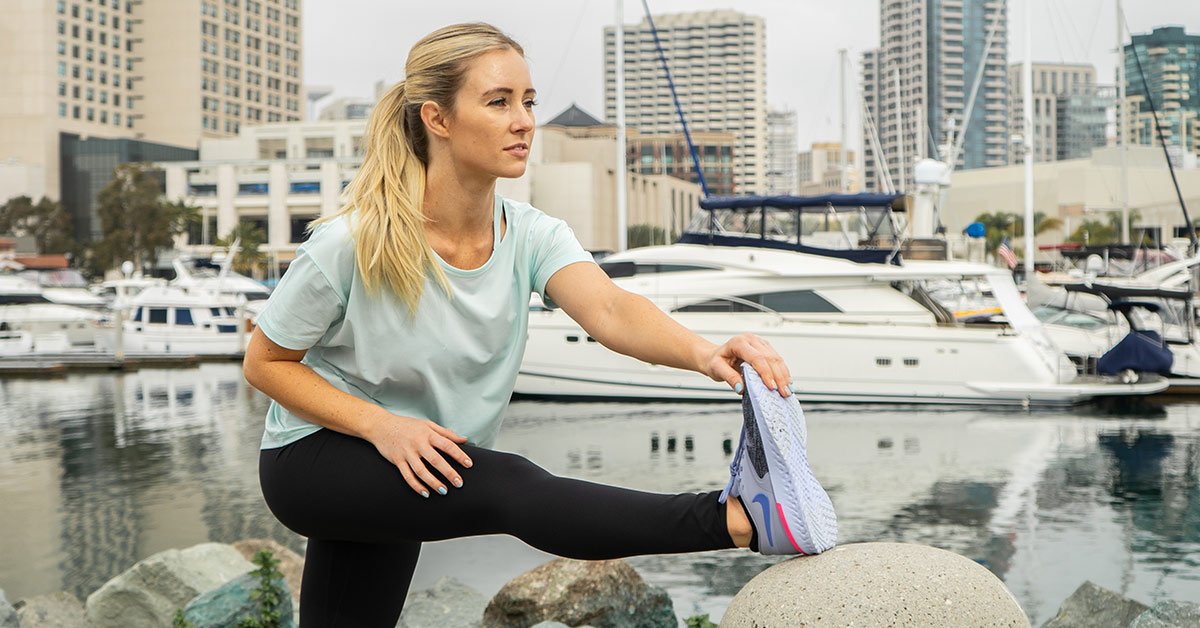

Featured
What Is The Best Running Shoes For Women
Modified: January 22, 2024
Discover the top featured running shoes for women. Find the best fit and support for your active lifestyle.
Introduction
Welcome to the world of running, where the thrill of breaking through personal barriers and the freedom of the open road converge. Whether you are an experienced runner or just starting out on your running journey, one essential piece of equipment that you cannot overlook is a pair of good running shoes. And if you’re a woman, finding the best running shoes designed specifically for you is crucial in ensuring optimal performance, comfort, and injury prevention.
But with countless options available in the market, choosing the perfect pair of running shoes can be a daunting task. The right running shoes should not only fit well, but also provide adequate support and cushioning based on your unique foot mechanics and running style. Moreover, they should complement your body structure and pronation type.
In this article, we will guide you through the process of selecting the best running shoes for women. We’ll explore factors you should consider, such as pronation, shoe design, cushioning, and durability, so that you can make an informed decision when shopping for running shoes. Whether you have neutral pronation, overpronation, or underpronation (supination), we’ll provide recommendations tailored to your specific needs.
So, whether you’re a casual jogger or a dedicated marathon runner, lace up your shoes and let’s dive into the world of women’s running shoes to find the perfect pair that will take your running game to the next level!
Factors to Consider When Choosing Running Shoes for Women
Choosing the right running shoes can make all the difference in your running experience. Here are some important factors to consider when selecting running shoes for women:
- Foot Type and Pronation: Understanding your foot type and pronation is crucial in finding the right running shoes. There are three main foot types: neutral arches, low arches (flat feet), and high arches. Pronation refers to how your foot rolls inward during running. Knowing your pronation type (neutral, overpronation, or underpronation) will help you choose shoes with the appropriate support and cushioning.
- Shoe Size and Fit: It’s essential to wear running shoes that fit properly. You should have enough room in the toe box to wiggle your toes comfortably. Aim for a snug fit around the midfoot and heel to prevent any slippage or discomfort. Visit a specialty running store to get your feet measured and receive expert advice on finding the right size and fit for your feet.
- Cushioning and Support: The amount of cushioning and support you need depends on your running style and the terrain you’ll be running on. If you’re a long-distance runner or prefer running on hard surfaces, opt for shoes with ample cushioning to absorb impact and provide comfort. Those with overpronation may benefit from shoes with added stability features, such as medial support.
- Flexibility: The flexibility of the shoe is important as it allows your foot to move naturally and comfortably. Look for shoes with a flexible sole that allows for easy toe-off and proper foot movement during the running gait cycle.
- Weight: The weight of the shoe can impact your running performance. Lighter shoes are often preferred by faster runners as they provide a more responsive and agile feel. However, it’s important to find the right balance between weight and cushioning to ensure adequate support.
- Durability: Running shoes undergo a lot of wear and tear, so choosing a durable pair is essential. Look for shoes with high-quality materials and a well-constructed outsole that can withstand the rigors of regular running.
- Price: While budget is a factor to consider, it’s important not to compromise on quality and fit. Investing in a good pair of running shoes is an investment in your comfort and safety during your runs.
By considering these factors, you’ll be well-equipped to choose the best running shoes for your individual needs. Remember, what works for one person may not work for another, so take the time to try on different shoes and find the perfect fit for you.
Understanding Pronation and Its Importance in Selecting the Right Running Shoes
When it comes to choosing the right running shoes, understanding pronation is key. Pronation refers to the natural inward rolling motion of your foot as it strikes the ground during running or walking. It’s an essential component of the body’s shock absorption mechanism, helping to distribute the impact evenly and provide stability.
There are three main types of pronation:
- Neutral Pronation: In this type of pronation, the foot rolls slightly inward upon landing, distributing the shock evenly and efficiently. Individuals with neutral pronation have a regular arch height and typically have a natural gait. They are well-suited for a wide range of running shoes with adequate cushioning and support.
- Overpronation: Overpronation occurs when the foot rolls excessively inward upon landing. This excessive inward motion can result in misalignment and increased stress on the feet, ankles, knees, and hips. Overpronators often have low arches or flat feet. To help correct this, running shoes with stability features, such as a medial post or firm midsole, are recommended to provide extra support and prevent overpronation.
- Underpronation (Supination): Underpronation, also known as supination, is the opposite of overpronation. It happens when the foot rolls outward, resulting in less shock absorption. Underpronators often have high arches. Cushioned running shoes with a flexible and neutral design are ideal for underpronators to provide maximum shock absorption and enhance stability.
Understanding your pronation type is crucial in selecting the right running shoes. Wearing shoes that align with your pronation needs can help prevent injuries, promote optimal efficiency, and enhance overall comfort during your runs.
To determine your pronation type, you can visit a specialty running store where trained experts can analyze your running gait or perform a wet foot test. The wet foot test involves wetting your foot and standing on a flat surface, which leaves a visible footprint that can indicate your arch type and pronation. You can also consult with a podiatrist or sports medicine professional for a more comprehensive assessment.
Once you know your pronation type, you can narrow down your options and focus on finding running shoes specifically designed to provide the right level of support and cushioning for your feet. Remember, choosing the right running shoes based on your pronation type can make a significant difference in your running performance, injury prevention, and overall comfort.
The Best Running Shoes for Women with Neutral Pronation
Women with neutral pronation have a natural and efficient running gait, which means their foot rolls inward slightly upon landing and distributes the shock evenly. For women with neutral pronation, here are some of the best running shoes:
- Nike Air Zoom Pegasus: The Nike Air Zoom Pegasus is a versatile running shoe loved by many neutral pronators. It offers a perfect balance of cushioning and responsiveness, with a breathable upper and a supportive midsole. The Pegasus is suitable for both long-distance runs and shorter workouts.
- Brooks Ghost: The Brooks Ghost is a popular choice for neutral pronators. It features ample cushioning and a comfortable fit, making it ideal for long-distance runs. The shoe also provides a smooth ride and excellent shock absorption, helping to reduce the risk of common running injuries.
- ASICS Gel-Nimbus: The ASICS Gel-Nimbus is a reliable running shoe renowned for its plush cushioning and supportive features. The Gel-Nimbus provides a comfortable fit and delivers excellent shock absorption, making it well-suited for high-mileage runners with neutral pronation.
- New Balance Fresh Foam 1080: The New Balance Fresh Foam 1080 is known for its maximum cushioning and lightweight design. It offers a plush and responsive feel, providing a smooth ride for neutral pronators. The shoe also incorporates a breathable upper and a durable outsole for added comfort and longevity.
- Mizuno Wave Rider: The Mizuno Wave Rider is a versatile running shoe loved by neutral pronators. It combines cushioning and stability, offering a comfortable and supportive ride. The Wave Rider also features a durable outsole for enhanced traction on various surfaces.
When trying on running shoes, it’s important to consider factors such as the fit, comfort, and how they feel during a test run. Each person’s feet are unique, so finding the right pair of running shoes that suit your individual needs and preferences is crucial.
Remember to replace your running shoes every 300-500 miles or when you notice signs of wear and tear. Regularly checking the condition of your shoes helps maintain optimal support and cushioning, ensuring a comfortable and safe running experience.
Investing in a high-quality pair of running shoes designed for neutral pronation will provide you with the necessary support and comfort to enjoy your runs to the fullest.
The Best Running Shoes for Women with Overpronation
For women with overpronation, finding the right running shoes is essential to provide the necessary support and stability to prevent injuries and promote proper alignment. Here are some of the best running shoes for women with overpronation:
- Brooks Adrenaline GTS: The Brooks Adrenaline GTS (Go-to Shoe) is a popular choice for overpronators. It offers excellent stability and cushioning, helping to correct excessive inward rolling of the foot. The Adrenaline GTS provides a secure fit and responsive ride, making it suitable for both long-distance runs and daily training.
- ASICS Gel-Kayano: The ASICS Gel-Kayano is known for its exceptional support and cushioning. It features a firm and stable midsole that helps control overpronation, reducing the risk of injuries. The Gel-Kayano also provides a comfortable fit and a smooth transition during the running gait cycle.
- New Balance 860: The New Balance 860 is designed specifically for overpronators. It offers a combination of stability, support, and cushioning. The shoe features a medial post and a responsive midsole that help control excessive inward rolling of the foot, promoting a more neutral stride and reducing the risk of overuse injuries.
- Mizuno Wave Inspire: The Mizuno Wave Inspire is a reliable running shoe with stability features that cater to overpronators. It combines cushioning and support, providing a comfortable and responsive ride. The Wave Inspire also features a durable outsole that offers excellent traction on various surfaces.
- Saucony Guide: The Saucony Guide is designed for overpronators seeking stability and support. It incorporates a medial post and cushioning to prevent excessive inward rolling of the foot. The Guide also offers a lightweight and flexible feel, ensuring a smooth and comfortable running experience.
When trying on running shoes, it’s essential to pay attention to how the shoes feel in terms of stability, support, and comfort. Additionally, consider factors such as the fit, arch support, and the type of insole that works best for your overpronation needs.
Remember to replace your running shoes every 300-500 miles or when you notice signs of wear and tear. Regularly checking the condition of your shoes helps maintain optimal support and cushioning, ensuring a comfortable and safe running experience.
Investing in a pair of running shoes specifically designed for overpronation will provide you with the necessary stability and control, enabling you to enjoy your runs while minimizing the risk of overuse injuries.
The Best Running Shoes for Women with Underpronation (Supination)
For women with underpronation, also known as supination, choosing the right running shoes is crucial to provide the necessary cushioning and flexibility to accommodate the foot’s outward rolling motion. Here are some of the best running shoes for women with underpronation:
- ASICS Gel-Nimbus: The ASICS Gel-Nimbus is a highly recommended running shoe for women with underpronation. It offers excellent cushioning and shock absorption, providing a comfortable and plush ride. The Gel-Nimbus also features a spacious toe box and a flexible outsole to accommodate the foot’s natural rolling motion.
- Nike Air Zoom Vomero: The Nike Air Zoom Vomero is a versatile running shoe that provides ample cushioning and support for women with underpronation. It features a responsive and lightweight design, offering a comfortable and smooth ride. The Air Zoom Vomero also incorporates a breathable upper and a durable outsole for enhanced performance.
- Brooks Glycerin: The Brooks Glycerin is an excellent choice for women with underpronation, offering superior cushioning and a neutral design. It provides a soft and plush feel, ensuring optimal comfort during long-distance runs. The Glycerin also boasts a flexible midsole and a padded collar for added support.
- New Balance Fresh Foam 1080: The New Balance Fresh Foam 1080 is a highly regarded running shoe for women with underpronation. It features a soft and responsive Fresh Foam midsole that provides superior cushioning and a comfortable ride. The Fresh Foam 1080 also incorporates a flexible outsole to accommodate the foot’s natural motion.
- Saucony Triumph: The Saucony Triumph is known for its plush cushioning and comfort, making it an ideal choice for women with underpronation. It offers a responsive ride and superior shock absorption, reducing the risk of impact-related injuries. The Triumph also features a roomy toe box and a lightweight design.
When trying on running shoes, pay attention to the cushioning and flexibility they offer. Look for shoes with ample padding and a flexible sole to accommodate the foot’s outward rolling motion.
Remember to replace your running shoes every 300-500 miles or when you notice signs of wear and tear. Regularly checking the condition of your shoes helps maintain optimal support and cushioning, ensuring a comfortable and safe running experience.
Investing in a pair of running shoes specifically designed for underpronation will provide you with the necessary cushioning and flexibility, allowing you to enjoy a smooth and comfortable running stride while minimizing the risk of injuries.
Tips for Finding the Perfect Running Shoes for Women
Finding the perfect running shoes can greatly enhance your running experience. Here are some helpful tips to consider when searching for the right pair of running shoes for women:
- Get a professional fitting: Visit a specialty running store where knowledgeable staff can analyze your foot size and shape. They can assist you in finding the right shoe size and provide expert advice based on your unique needs.
- Consider your pronation: Determine your pronation type (neutral, overpronation, or underpronation) to choose shoes with the appropriate level of support and cushioning.
- Try on different brands and models: Every shoe brand and model is designed differently. Experiment with different brands and models to find the ones that fit your feet comfortably and provide the desired features.
- Pay attention to the fit: Ensure that the shoes have enough room in the toe box for your toes to wiggle comfortably. Aim for a snug fit around the midfoot and heel to prevent slippage while running.
- Test them out: Take the shoes for a test run, if possible. Many specialty running stores have treadmills or designated areas where you can try out the shoes to see how they feel.
- Consider the terrain: Think about the surfaces you typically run on. Choose shoes with appropriate outsole traction for road running, trail running, or a combination of both.
- Replace shoes regularly: Running shoes have a limited lifespan. Replace them every 300-500 miles or when you notice signs of wear and tear, such as worn-out cushioning or reduced support.
- Consult with a professional if needed: If you have specific foot conditions or concerns, it may be beneficial to consult with a podiatrist or sports medicine professional for personalized advice.
- Consider your running goals: If you’re training for a specific race or have performance goals, discuss them with the store staff so they can help you find shoes that cater to your specific needs.
- Trust your comfort: Ultimately, finding the perfect running shoes is a matter of personal comfort. Choose shoes that feel good on your feet and provide the necessary support and cushioning for your runs.
Remember, finding the right pair of running shoes may require some trial and error. Take your time, try on different options, and seek expert guidance to ensure you find the perfect fit for your feet. Investing in high-quality running shoes that meet your needs will contribute to a more enjoyable and injury-free running experience.
Frequently Asked Questions about Running Shoes for Women
When it comes to purchasing running shoes, many women have questions. Here are some commonly asked questions about running shoes for women:
- How often should I replace my running shoes? It is generally recommended to replace your running shoes every 300-500 miles or when you notice signs of wear and tear. This ensures that you have adequate cushioning and support to prevent injuries.
- Should I buy shoes specifically designed for women? While there are running shoes specifically designed for women, it ultimately depends on individual preference. Some women find that gender-specific shoes provide a better fit and accommodate the unique shape of their feet. However, others may find that unisex or men’s running shoes work just as well.
- How do I know if a shoe fits properly? A well-fitting running shoe should have enough room in the toe box for your toes to move comfortably. It should feel snug around the midfoot and heel without any slippage. A professional fitting at a specialty running store can help ensure a proper fit.
- Can I use running shoes for other activities like walking or gym workouts? Yes, running shoes can be versatile and suitable for other activities like walking or gym workouts. However, keep in mind that the cushioning and support in running shoes are specifically designed for the impact and demands of running.
- Should I consider my arch height when buying running shoes? Yes, your arch height can influence the type of running shoes that would work best for you. High arches often benefit from shoes with extra cushioning, while low arches may require more stability and support. However, neutral pronation is also an essential factor to consider.
- Can I use orthotics with my running shoes? Yes, if you wear orthotics, it’s important to choose running shoes that can accommodate them. Look for shoes with removable insoles and enough depth in the shoe to accommodate the orthotics comfortably.
- Do I need to break in my running shoes? While some shoes may require a short break-in period, modern running shoes typically don’t need extensive breaking in. It’s still advisable to gradually increase your mileage with new shoes to allow your feet to adjust to any minor differences in fit or cushioning.
- Can I wash my running shoes? It’s generally not recommended to put your running shoes in the washing machine. Instead, gently hand wash them using mild soap and water, and allow them to air dry. This helps maintain the integrity of the shoe materials and extends their lifespan.
- Is it necessary to buy expensive running shoes? The price of running shoes can vary greatly, and expensive doesn’t always mean better. While investing in a higher-quality pair of running shoes can provide additional features and durability, there are also affordable options that offer excellent performance. Focus on finding shoes that meet your specific needs and fit your budget.
Remember, everyone’s feet and running requirements are unique. If you have specific concerns or questions, it’s always beneficial to seek advice from professionals at a specialty running store or a healthcare provider.
Conclusion
Choosing the perfect running shoes for women is a process that requires careful consideration of various factors such as foot type, pronation, fit, cushioning, and support. By understanding and evaluating these factors, you can find running shoes that enhance your comfort, performance, and overall running experience.
For women with neutral pronation, options like the Nike Air Zoom Pegasus, Brooks Ghost, ASICS Gel-Nimbus, New Balance Fresh Foam 1080, and Mizuno Wave Rider are excellent choices. These shoes provide the right combination of cushioning, support, and durability.
If you have overpronation, shoes like the Brooks Adrenaline GTS, ASICS Gel-Kayano, New Balance 860, Mizuno Wave Inspire, and Saucony Guide offer stability and support to help correct and control excessive inward rolling of the foot.
For women with underpronation (supination), the ASICS Gel-Nimbus, Nike Air Zoom Vomero, Brooks Glycerin, New Balance Fresh Foam 1080, and Saucony Triumph are among the top recommendations. These shoes provide ample cushioning and flexibility to accommodate the foot’s outward rolling motion.
When searching for the perfect running shoes, keep in mind tips such as getting a professional fitting, considering your pronation type, trying on different brands and models, and paying attention to the fit and comfort. Regularly replacing your running shoes and consulting with professionals when needed can also contribute to an optimal running experience.
Remember, finding the right pair of running shoes is a personal journey. What works for someone else may not necessarily work for you. Therefore, it’s essential to listen to your body, consider your specific needs, and find the shoes that provide the support, comfort, and performance you desire.
Investing in high-quality running shoes tailored to your individual needs will not only minimize the risk of injuries but also enhance your running performance and enjoyment. So, lace up your shoes and hit the road with confidence, knowing that you have the best running shoes for women to support you every step of the way.
